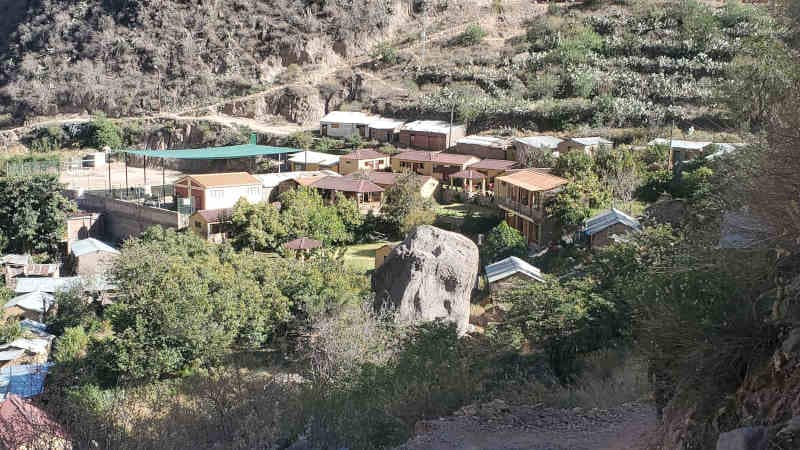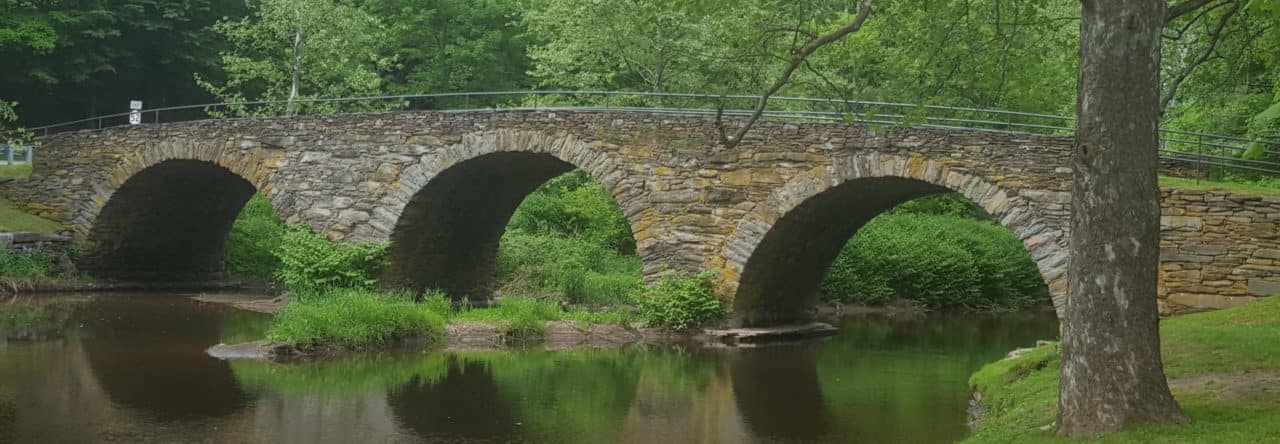Day two in the Canyon saw a much later start than the previous day. As mentioned in the previous post, there are several reasons why I was glad that I chose to do this hike in three days instead of two days. It was nice to be able to relax within the cabin and we enjoyed some really good food our first day in the cabin. The second reason I am glad that we did the three day hike is that we got to walk through two towns that the other hikers did not get to see and we were able to learn more history about the people in the canyon. After a fairly short walk we arrived in Cosñirhua. Primary students in San de Chuccho would have to walk to Cosñirhua to attend school. There are very few kids in this age group though as the school would only have eight students and one teacher.

There is a gold mine on the opposite side of this mountain and they have invested in these towns. They are the reasons they have roads and they are building an aqueduct to help provide water to the people that live here. There is only one secondary school in this valley and while there used to be a school bus to take students to this town (towards the top of the valley) it is broken so students have to walk up to 90 minutes to get to school. Not sure what is happening with the bus but the gold mining company bought it. Hopefully they plan on fixing it.

The next town we would walk through would be Malata. This primary school has 14 students currently attending it. We walked past a tiny little clinic that is the only clinic if people get sick in any of these towns. Down the road a little further is a private clinic (much nicer) that is for the gold miners. Apparently in emergencies they do help out the people that live there.

After passing through Malata we would drop back down to the bottom of the valley to cross the Colca River again. Once we crossed the river we would climb back up a little bit and enter Sangalle, an oasis at the bottom of this valley. There are no roads to this town and the only way to get in or out is by walking. Mules carry goods in and out of the bottom of this valley.

The third reason that I was glad that I did the three day hike is that I got into Sangalle around noon. This meant I got to enjoy the swimming pool during the heat of the day. Since we were near the bottom of the canyon, the sun set behind the canyon walls around 3:30 p.m. and temperatures dropped quickly. It is winter in Peru. People that did the two day hike arrived at Sangalle between 4 p.m. and 7 p.m. and they could not enjoy the pool as much as we did. Some of them did jump in but they found it really cold.

It was an early night as the next morning would be tough. We would be hitting the trail by 4:4o a.m. to hike to the top of the canyon. Our goal was to reach the top before the sun rose and then we would get to have breakfast. The climb was steep but we made good time. We hiked over a mile in the first hour. Things started to slow a little at that point though. What made it tough was how dry it is. You don’t realize how much dust is kicked up hiking in this area until you are hiking by headlamp. As the second hour ticked by fatigue was starting to set in. It looked like the top was approaching but I know how misleading false summits can be. It turns out that this wasn’t a false summit and I was almost to the top. With about 15 minutes of hiking remaining the sun started to rise. When I reached the top there was this tremendous sense of accomplishment.


After reaching the top we walked another half a mile to town, had breakfast and left. Not too long after leaving we stopped at some natural hot springs to soak our tired/sore legs and it did feel good. On our way back to Arequipa we stopped at a viewpoint that was over 16,000 feet high and saw several volcanoes. We stopped once more so people could use the restrooms but I was fixated on the volcanoes as well as the hoodoos that I saw. Eventually we made it back to Arequipa and I prepared to move on to my next destination early the next morning.


